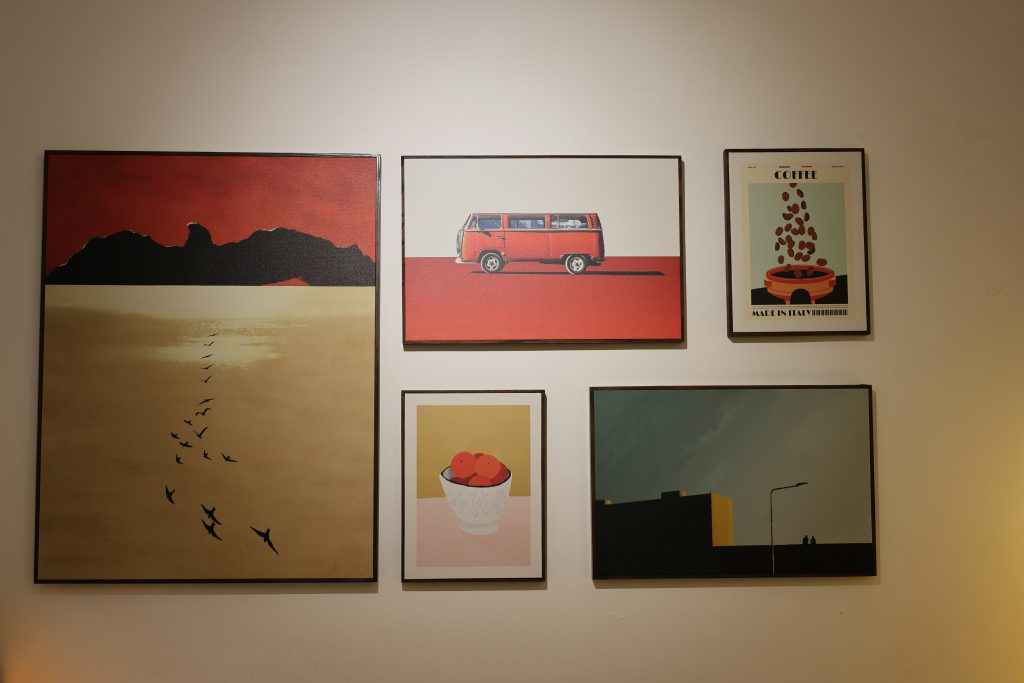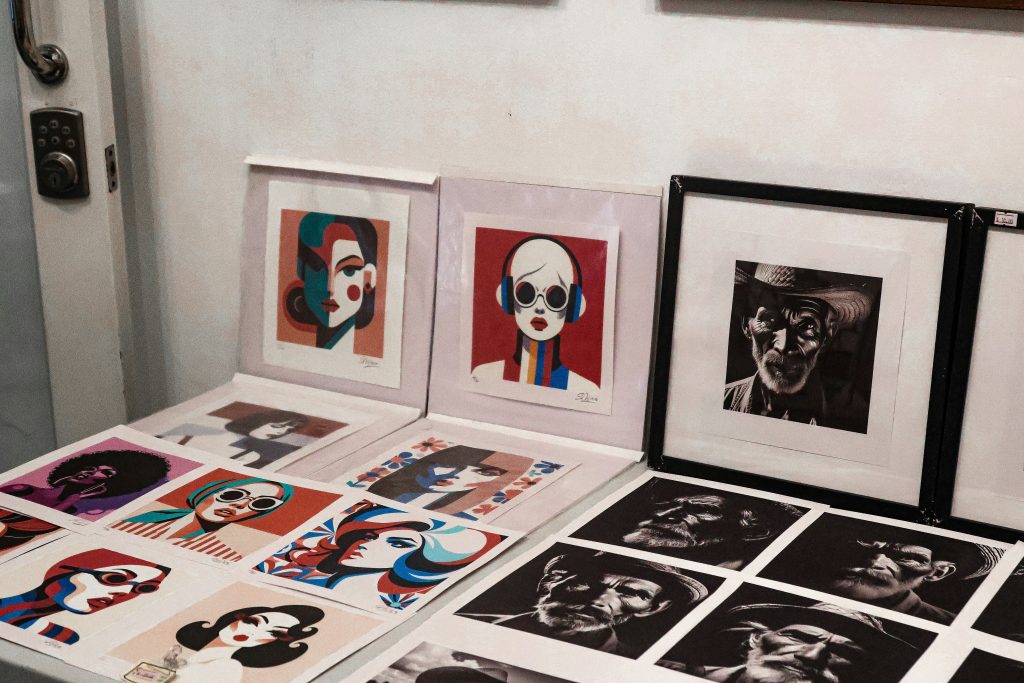
01 Sep Art Promotion through Local Businesses and Collaborations in 2025
Introduction
In today’s competitive creative landscape, artists and arts organizations are constantly seeking effective ways to amplify their visibility. One of the most impactful approaches is forming partnerships with local businesses, where both parties engage in mutual promotional efforts. This means that artists and businesses collaborate by sharing resources, audiences, and marketing strategies to achieve greater reach and community influence. These collaborations not only spotlight artistic talent but also enhance the cultural value of local businesses, making the partnership a genuine win-win. By joining forces, artists gain platforms for exposure while businesses benefit from enriched customer experiences and community engagement.
Why Local Businesses Are Key Partners for Art Promotion
Local businesses serve as natural allies for artists because they share a community-driven focus. Cafés, restaurants, boutique shops, hotels, and other neighborhood establishments often target the same demographics that appreciate local art. These venues are frequented by residents and visitors alike, making them excellent platforms for showcasing creativity. Beyond shared audiences, businesses offer enhanced visibility through physical spaces such as walls, storefront windows, or lobbies where artworks can be displayed. This transforms everyday commercial spaces into cultural hubs. Additionally, such collaborations root art in the fabric of the community, positioning it as an accessible and celebrated part of daily life. By pooling marketing resources—whether through shared social media posts, co-branded events, or cross-promotions—both artists and businesses can reduce costs while maximizing their outreach.
Types of Collaborative Promotional Strategies
There are many ways artists and businesses can collaborate, each bringing unique promotional opportunities. Physical space integration is one of the most direct strategies, where restaurants or retail shops host rotating art exhibits, or businesses commission murals and installations that are co-branded to reflect shared values. Event-based partnerships are equally powerful, ranging from art openings held during regular business hours to seasonal community festivals or live workshops where customers can watch the creative process in action. Cross-promotional marketing leverages digital channels, with joint campaigns across social media platforms, newsletters, and blogs to highlight both the artist and the business. In-store promotions can also connect the two, such as offering special discounts to art event attendees or designing loyalty cards featuring original artwork. Finally, product and service collaborations expand the possibilities even further. Limited-edition merchandise, artist-designed packaging, or bundled experiences—like a café serving a special drink paired with an art tour—add value for both partners while creating memorable, shareable customer experiences.
Benefits for Artists and Arts Organizations
For artists, the advantages of partnering with businesses extend far beyond exposure. Access to a business’s established customer base opens doors to new audiences, including potential collectors who may not otherwise attend traditional gallery events. Reduced costs also play a critical role, as expenses for venue rentals, advertising, and event logistics can be shared with the business partner. Collaborations with reputable local businesses lend credibility and trust, boosting an artist’s professional reputation. These partnerships also foster networking opportunities, connecting artists to other entrepreneurs, community leaders, and potential patrons who can support their long-term careers. Importantly, sustainable partnerships provide ongoing exposure, ensuring visibility that extends beyond one-time exhibitions or events.
Benefits for Local Businesses
The benefits for businesses are just as significant. Integrating art into commercial spaces enriches the customer experience, creating a welcoming and memorable environment that encourages repeat visits. Art collaborations also provide differentiation from competitors, setting businesses apart by highlighting their support for local culture. Hosting art events or exhibitions draws increased foot traffic, boosting sales and brand visibility. Beyond immediate commercial benefits, supporting local art strengthens a business’s brand image, showing that it values community development and cultural enrichment. These initiatives often generate media coverage and social media buzz, offering free publicity and strengthening the business’s reputation as a socially responsible and culturally engaged local leader.
Key Steps to Establish Successful Partnerships
To ensure partnerships thrive, both artists and businesses should approach them strategically. The first step is identifying compatible partners whose values, customer demographics, and spaces align with the artist’s vision. Once a match is found, the next step is crafting a mutually beneficial proposal that outlines clear goals, responsibilities, and promotional commitments. Formalizing these agreements with simple contracts can prevent misunderstandings, covering timelines, roles, and revenue-sharing arrangements if needed. A coordinated marketing strategy is essential, with unified hashtags, shared event calendars, and co-branded promotional materials ensuring consistency. Finally, long-term success depends on maintaining relationships—regular check-ins, celebrating milestones, and adjusting strategies based on feedback help partnerships evolve and remain productive.
Overcoming Common Challenges
Like any collaboration, art-business partnerships may face challenges. Misaligned expectations are common but can be addressed through upfront communication and written agreements. Logistical constraints, such as limited space, can be overcome with flexible formats like smaller artworks, digital displays, or pop-up exhibitions. To avoid a promotion imbalance, both parties should actively participate in marketing, with clear task assignments ensuring fairness. Finally, measuring success is crucial. Tracking metrics like increased foot traffic, social media engagement, sales spikes, or post-event surveys helps determine the partnership’s return on investment and provides insights for future collaborations.
Conclusion
Art promotion through local business collaborations creates powerful, mutually beneficial opportunities that enrich communities both culturally and economically. For artists, these partnerships provide visibility, credibility, and access to new audiences. For businesses, they bring enhanced customer experiences, brand differentiation, and increased engagement. Together, they build stronger, more vibrant communities where art becomes an integral part of daily life. Artists are encouraged to proactively seek partnerships, while businesses should recognize art as a strategic asset that drives growth and community connection. As these collaborations expand, they contribute to resilient local arts ecosystems and inspire broader civic participation—proving that when art and business unite, the entire community thrives.
Key Takeaways
- Mutual Value Creation: Collaborations between artists and local businesses provide shared benefits—artists gain visibility and credibility, while businesses enhance customer experience and brand differentiation.
- Community-Centered Partnerships: Local businesses such as cafés, restaurants, and boutiques are natural allies, offering spaces and shared audiences that make art more accessible in daily life.
- Diverse Strategies: Effective collaborations include art displays in commercial spaces, joint events, co-branded marketing campaigns, limited-edition products, and loyalty programs with artistic elements.
- Strategic Benefits for Artists: Partnerships expand audiences, reduce costs, increase networking opportunities, and provide sustained exposure beyond traditional gallery settings.
- Advantages for Businesses: Hosting art boosts foot traffic, strengthens cultural reputation, attracts media attention, and sets businesses apart from competitors.
- Keys to Success: Clear alignment of values, formal agreements, coordinated marketing, and long-term relationship-building are essential for sustainable partnerships.
- Managing Challenges: Open communication, flexible formats, balanced promotion efforts, and tracking measurable outcomes help overcome common obstacles.
- Broader Impact: These partnerships not only support artists and businesses but also contribute to stronger, more vibrant, and culturally enriched communities.
FAQs
Why should artists collaborate with local businesses?
Artists benefit from partnerships with local businesses because they gain access to new audiences, shared marketing resources, and enhanced credibility. Businesses provide physical spaces and loyal customer bases, allowing artists to showcase their work in everyday settings while fostering long-term visibility and stronger community connections.
How do local businesses benefit from supporting art?
Businesses that collaborate with artists create more engaging and memorable customer experiences, attract new visitors, and differentiate themselves from competitors. These partnerships boost brand image, generate positive publicity, and show commitment to community and culture, making businesses more appealing to socially conscious customers.
What makes an art-business partnership successful?
Successful partnerships require clear communication, aligned values, and well-defined responsibilities. Formal agreements help avoid misunderstandings, while joint marketing strategies ensure equal promotion. Regular check-ins, shared milestones, and flexibility in overcoming challenges strengthen long-term collaboration, ensuring both artists and businesses maximize exposure, engagement, and community impact.
When visiting an art collection, a guided tour transforms a simple walk through galleries into an immersive experience. This article explains how expert guides elevate understanding, inspire curiosity, and make art exhibitions accessible and enjoyable for everyone.




